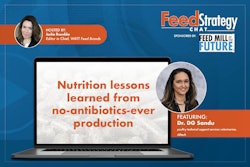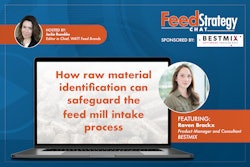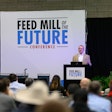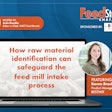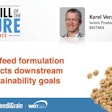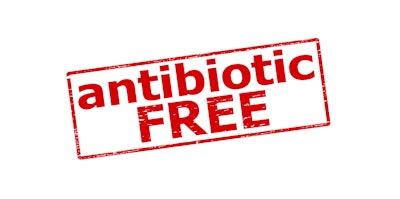
A combination of strategies is needed to run a successful antibiotic-free (ABF) or no-antibiotics-ever (NAE) poultry program, according to Dr. Dulmelis “DG” Sandu, poultry technical support services veterinarian for Alltech.
Sandu spoke January 30 at the Feed Mill of the Future Conference during the International Production & Processing Expo (IPPE) in Atlanta.
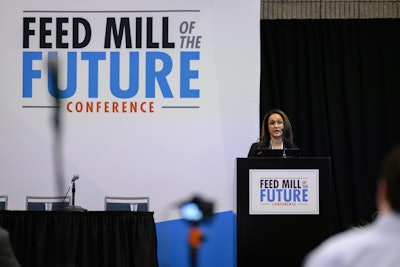 Dr. Dulmelis “DG” Sandu, poultry technical support services veterinarian for Alltech, spoke January 30 at the Feed Mill of the Future Conference during the International Production & Processing Expo (IPPE) in Atlanta.Photo by Paul Ward
Dr. Dulmelis “DG” Sandu, poultry technical support services veterinarian for Alltech, spoke January 30 at the Feed Mill of the Future Conference during the International Production & Processing Expo (IPPE) in Atlanta.Photo by Paul Ward
Broiler chickens receiving antibiotics in the hatchery decreased from 90% in 2013 to less than 1% in 2022, Sandu said. Turkeys receiving antibiotics in the hatchery decreased from 97% to less than 38% in 2022. Meanwhile, producers still cite disease concerns such as coccidiosis, chick quality/early mortality and necrotic enteritis in broilers and colibacillosis, clostridial dermatitis and reovirus in turkeys.
“There is no silver bullet,” she said, but feed additives, water-applied solutions, nutrition and veterinary support, vaccination programs and management practices can work together to support birds in ABF or NAE systems.
Feed additives, such as enzymes, amino acids, prebiotics and probiotics, antioxidants and minerals can improve digestibility and the nutritive capabilities of feed, Sandu said.
“We know that we need to rely a little bit heavily on these as we proceed into no antibiotics ever. Now, it … increases your costs too. However, they are going to be necessary. So, playing around with these and making them fit your program is imperative. One of the things I always tell people is look for products that have multiple modalities,” she said.
This means using products that have direct and indirect effects and that may have several different properties such as immunomodulatory, antifungal and anticoccidial.
Nutritional needs for poultry have changed over time, with birds producing more meat and putting more muscle on a better frame.
“We know that that bird is going to require more energy; that's going to require more feed. Therefore, we must keep those needs in mind in going forward,” Sandu said.
Future NAE systems should focus on internal and external factors that affect bird productivity, Sandu said.
Internal factors include building overall bird immunity, maximizing intestinal health, and promoting and harnessing the power of microbiome diversity.
“Start at the breeder level: How can you look forward into that progeny and give it the best shot that it has with building healthy immune system?” Sandu said. “Same thing with intestinal health. Everything that we're feeding them is to create more meat, more muscle, a better immune system. … And then of course, the newest thing that I like to promote is, how can we look at the microbial diversity of the GI?”
External factors include vaccination, biosecurity and management protocols.
“You have to enhance your management protocols. … Pay close attention to your flock. This is where being detail oriented is going to pay off. Look at your feed, your lights, your air, your water, all of those things in conjunction, and I know that this is nothing new, but we get tired and when we get tired of repetitive action, sometimes we slip.”

